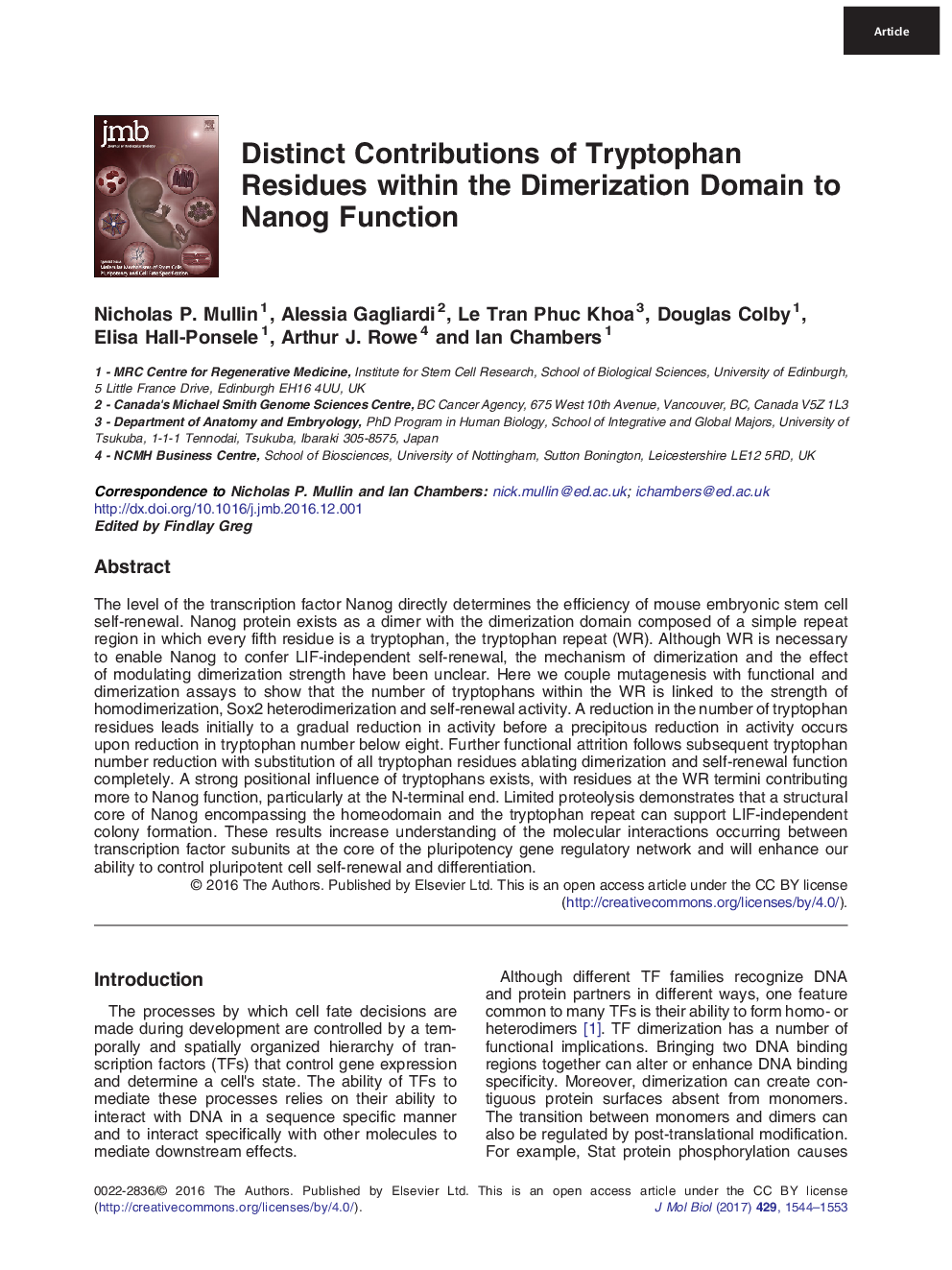| کد مقاله | کد نشریه | سال انتشار | مقاله انگلیسی | نسخه تمام متن |
|---|---|---|---|---|
| 5533328 | 1402115 | 2017 | 10 صفحه PDF | دانلود رایگان |
- The Nanog tryptophan repeat (WR) is required for LIF-independent mouse embryonic stem cell self-renewal.
- Tryptophans within WR give a graded increase in self-renewal and dimerization.
- Tryptophans at the WR extremities contribute disproportionally to Nanog function.
- A structural core of Nanog containing WR can drive LIF-independent self-renewal.
- Results clarify the contribution of tryptophan residues within WR to Nanog function.
The level of the transcription factor Nanog directly determines the efficiency of mouse embryonic stem cell self-renewal. Nanog protein exists as a dimer with the dimerization domain composed of a simple repeat region in which every fifth residue is a tryptophan, the tryptophan repeat (WR). Although WR is necessary to enable Nanog to confer LIF-independent self-renewal, the mechanism of dimerization and the effect of modulating dimerization strength have been unclear. Here we couple mutagenesis with functional and dimerization assays to show that the number of tryptophans within the WR is linked to the strength of homodimerization, Sox2 heterodimerization and self-renewal activity. A reduction in the number of tryptophan residues leads initially to a gradual reduction in activity before a precipitous reduction in activity occurs upon reduction in tryptophan number below eight. Further functional attrition follows subsequent tryptophan number reduction with substitution of all tryptophan residues ablating dimerization and self-renewal function completely. A strong positional influence of tryptophans exists, with residues at the WR termini contributing more to Nanog function, particularly at the N-terminal end. Limited proteolysis demonstrates that a structural core of Nanog encompassing the homeodomain and the tryptophan repeat can support LIF-independent colony formation. These results increase understanding of the molecular interactions occurring between transcription factor subunits at the core of the pluripotency gene regulatory network and will enhance our ability to control pluripotent cell self-renewal and differentiation.
Graphical Abstract189
Journal: Journal of Molecular Biology - Volume 429, Issue 10, 19 May 2017, Pages 1544-1553
